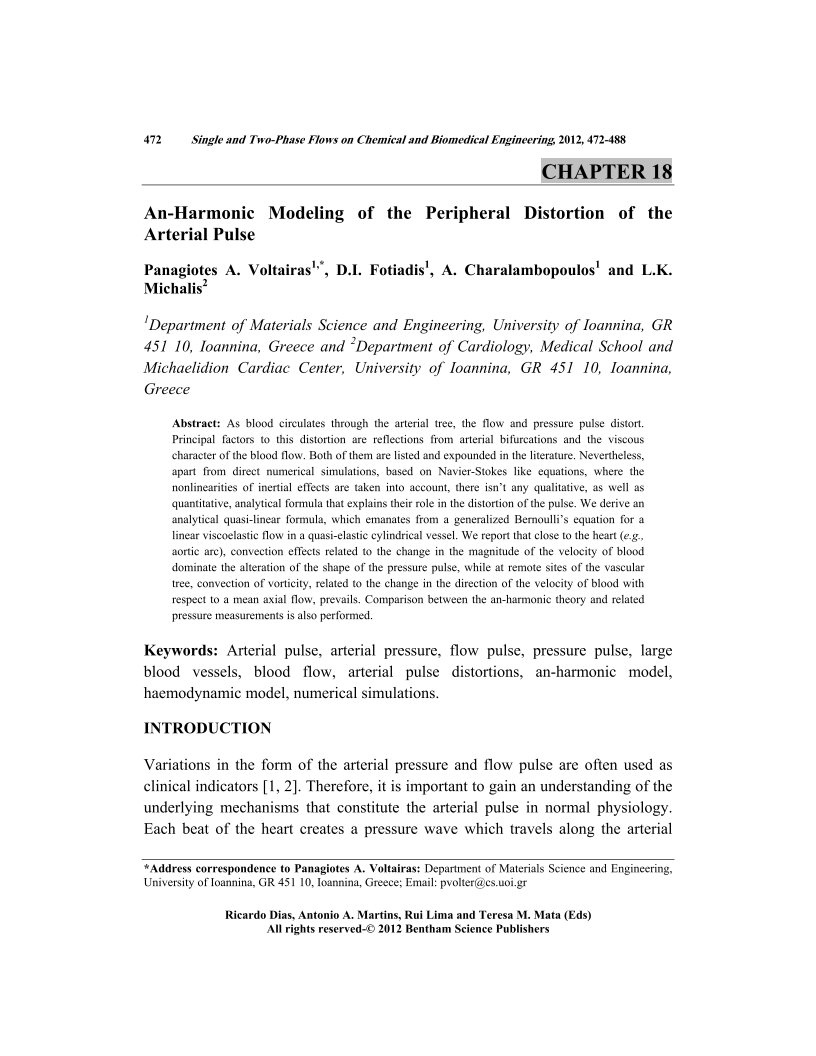An-Harmonic Modeling of the Peripheral Distortion of the Arterial Pulse

- Authors: Panagiotes A. Voltairas1, D.I. Fotiadis2, A. Charalambopoulos3, L.K Michalis4
-
View Affiliations Hide Affiliations1 Department of Materials Science and Engineering, University of Ioannina, GR 451 10, Ioannina, Greece, Greece 2 Department of Materials Science and Engineering, University of Ioannina, GR 451 10, Ioannina, Greece 3 Department of Materials Science and Engineering, University of Ioannina, GR 451 10, Ioannina, Greece 4 Department of Cardiology, Medical School and Michaelidion Cardiac Center, University of Ioannina, GR 451 10, Ioannina, Greece
- Source: Single and Two-Phase Flows on Chemical and Biomedical Engineering , pp 472-488
- Publication Date: July 2012
- Language: English
An-Harmonic Modeling of the Peripheral Distortion of the Arterial Pulse, Page 1 of 1
< Previous page | Next page > /docserver/preview/fulltext/9781608052950/chapter-18-1.gif
As blood circulates through the arterial tree, the flow and pressure pulse distort. Principal factors to this distortion are reflections from arterial bifurcations and the viscous character of the blood flow. Both of them are listed and expounded in the literature. Nevertheless, apart from direct numerical simulations, based on Navier-Stokes like equations, where the nonlinearities of inertial effects are taken into account, there isn't any qualitative, as well as quantitative, analytical formula that explains their role in the distortion of the pulse. We derive an analytical quasi-linear formula, which emanates from a generalized Bernoulli's equation for a linear viscoelastic flow in a quasi-elastic cylindrical vessel. We report that close to the heart (e.g., aortic arc), convection effects related to the change in the magnitude of the velocity of blood dominate the alteration of the shape of the pressure pulse, while at remote sites of the vascular tree, convection of vorticity, related to the change in the direction of the velocity of blood with respect to a mean axial flow, prevails. Comparison between the an-harmonic theory and related pressure measurements is also performed.
-
From This Site
/content/books/9781608052950.chapter-18dcterms_subject,pub_keyword-contentType:Journal -contentType:Figure -contentType:Table -contentType:SupplementaryData105

